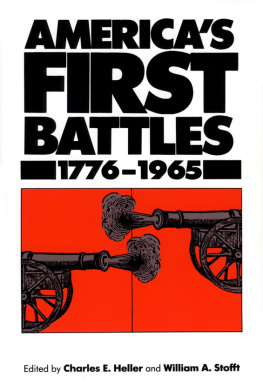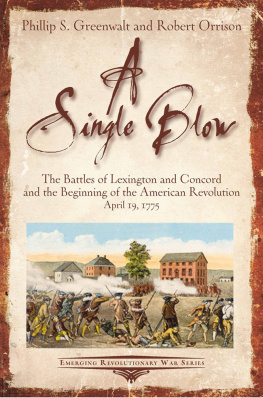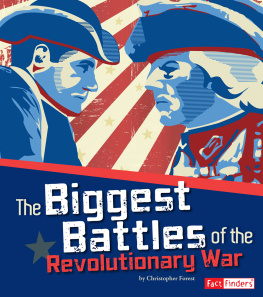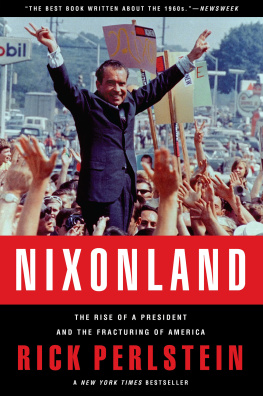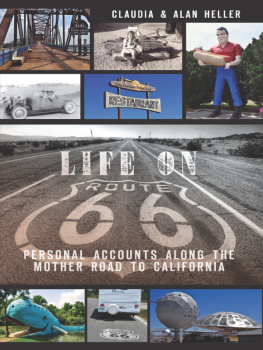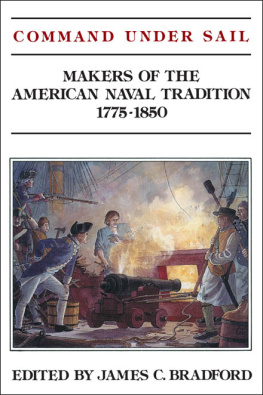Americas First Battles
17761965
EDITED BY
Charles E. Heller
LIEUTENANT COLONEL, UNITED STATES ARMY RESERVE
&
William A. Stofft
BRIGADIER GENERAL, UNITED STATES ARMY
Maps by Laura Kriegstrom Poracsky
UNIVERSITY PRESS OF KANSAS
1986 by the University Press of Kansas. Chapter 9 1986 by Roy K. Flint
All rights reserved
Published by the University Press of Kansas (Lawrence, Kansas 66045), which was organized by the Kansas Board of Regents and is operated and funded by Emporia State University, Fort Hays State University, Kansas State University, Pittsburg State University, the University of Kansas, and Wichita State University
Library of Congress Cataloging-in-Publication Data
Americas first battles, 17761965.
Includes index.
1. United StatesHistory, Military. 2. Battles
United StatesHistory. I. Heller, Charles E.
II. Stofft, William A.
E181.A46198697386-7825
ISBN 978-0-7006-0276-6 (cloth)
ISBN 978-0-7006-0277-3 (paperback)
ISBN 978-0-7006-2661-8 (ebook)
Printed in the United States of America
20 19
Preface
The world in the late twentieth century clearly has become a more dangerous habitation than ever before for all human beings. The age-old pattern of conflict among and between peoples has become intertwined with newly created capabilities for global destruction. In this environment of challenge and conflict, the United States bears broad responsibilities for maintaining a precarious peace and protecting its own and its allies vital interests. The United States Armytoday as throughout the nations history truly a manifestation of a democratic republichas thus been given challenging missions and heavy burdens by the makers of national policy. With little prior warning, the Army must be capable of fighting in a variety of geographic locales against any one aggressor or a coalition of potential aggressors in joint and combined formations. The Armys officer corps not only must prepare for the war that could begin today but must also anticipate the nature and evolution of likely future conflicts. One means currently employed to assist in preparing and planning for war is study and analysis of military history. As was true for military thinkers of earlier times, now, when discussions arise with regard to problems facing the Army and the nation, a question that continually surfaces is: How have we prepared for war and gone to war in the past? The idea for the present work took shape as an effort to answer that question from todays perspective.
Underlying what has become Americas First Battles is the assumption that it makes a great deal of difference how the U.S. Army prepares in peacetime, mobilizes for war, fights its first battle, and subsequently adapts to the exigencies of conflict. This assumption was tested by inviting eleven historians, each a nationally known specialist in a particular period of military history, to write essays on the first battle or campaign in each of nine wars in which the U.S. Army has fought. The editors, who were at the Combat Studies Institute (CSI, the history department of the U.S. Army Command and General Staff College [CGSC], Fort Leavenworth, Kansas), transformed general concepts into a scholarly examination of the way the U.S. Army has prepared for, fought, and learned from first battles. On the completion of the first drafts a working seminar was held at CGSC, at which the authors and editors refined the direction of the essays. The aim was to provide concise accounts of how the peacetime American military establishment is transformed when plunged into hostile circumstances. The essays analyze the ability of a prewar army, once in battle, to adjust to conflict. The final essay assesses similarities and differences among the case studies and traces the rhythms of the historical experience in order to comprehend how America has gone to war.
The editors devised a list of topics to be treated in each essay and set to work. Included were such issues as strategic and political background, the circumstances in which the U.S. Army found itself when the war began, strengths and weaknesses of the opponent, organizational and tactical procedures, weaponry, creation of a plan of operations, combat performance and leadership in the battle itself, and lessons learned (or not learned) from the experience of this first battle. The assignment posed numerous interesting problems for the editors. In several instances, the issue of which engagement should be selected as the first battle of a war had to be thrashed out. After much research and discussion, ten first battles were selected from Americas major wars. Because of the breadth of World War II, two battles were selected from this conflict, reflecting the very real differences in how war was waged in the Atlantic and Pacific areas. In two instancesthe Mexican War and the Spanish-American Warthe editors and authors decided that a study of the battles would not be complete without examining either an engagement immediately following the battle (as with Palo Alto and Resaca de la Palma) or a simultaneous battle (as with San Juan and El Caney).
The first engagements in the Mexican War, the Civil War, World War I, World War II (Atlantic area), Korea, and Vietnam were universally agreed on as appropriate choices. The initial engagements of the American Revolution, the War of 1812, the Spanish-American War, and World War II (Pacific area) were not so clear-cut. Here, the battles selected were those that best matched the Armys current doctrinal interests without sacrificing the first-battle concept. For example, purists might argue that Bunker Hill was the first test of arms for Americans in the Revolutionary War. However, Long Island was the first battle fought by the newly formed Continental Army regulars commanded by George Washington. Similarly, Detroit is a logical first engagement in the War of 1812, but that was essentially a long march followed by a quick surrender and did not lend itself to any real consideration of military organization, training, and tactical doctrine. Queenston, on the other hand, took place a short time later but possessed many of the ingredients that made it appropriate for close scrutiny. Cantigny is a World War I set-piece battle. U.S. forces had been engaged earlier, but Cantigny was the first test for the Army of 1918 in an offensive setting. Buna, the first large-scale combat experience of the mobilized Army in the Pacific, followed by some eight months the disaster in the Philippines. However, it was fought with a mobilized citizen forcea National Guard divisionand it was an offensive battle in the spirit of the United States Armys traditional doctrine. Conversely, the battle of Kasserine Pass was placed before Buna in order of presentation, even though this bloody baptism of American troops in North Africa began nearly six weeks after their comrades had engaged the Japanese in New Guinea; the reasoning here was that Kasserine better reflected the strategic assumptions and other intellectual baggage, training, and doctrine that the U.S. Army carried into World War II.


